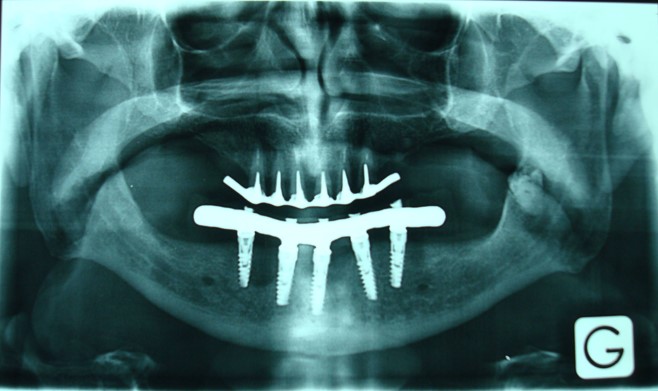Mandibular rehabilitation with MAER implants and TOV Multi-Unit abutments
.png)
Clinical Context:
A 72-year-old patient, fully edentulous on one side of the mandible, consulted for a fixed and long-lasting solution. The objective: restore function and aesthetics while ensuring hygiene and long-term stability.
_1.jpg)
Step 1: Consultation and Diagnosis
The patient presented with left mandibular edentulism and five remaining teeth that were non-restorable. Clinical and radiographic analysis showed sufficient native bone volume, eliminating the need for grafting or augmentation.
Step 2: Site Preparation
The five remaining teeth were extracted. Alveoloplasty was performed to regularize the bone profile and optimize prosthetic stability. The site was prepared under clean and stable surgical conditions, with no need for grafting material.
_1.jpg)
Step 3: Implant Placement
Five MAER implants (Ø3.5–Ø4.0 mm) were placed in the edentulous mandibular region. Drilling followed the standard TOV protocol, ensuring optimal primary stability thanks to the conical design and deep threads of the implants.
.jpg)
Step 4: Impression and Laboratory Work
Transfers were connected to the implant replicas. A precision impression was taken using Luxabite and a PEI tray. The model was poured for the fabrication of the final screw-retained bar. This step ensures perfect passivity and optimal adaptation of the future prosthesis.
Step 5: Delivery of the Final Prosthesis
The final bar was screwed onto TOV Multi-Unit abutments, providing excellent immediate function and balanced load distribution. The screw-retained prosthesis is both aesthetic and hygienic, and can be removed for maintenance, offering comfort and safety to the patient.

Results:
✅ Restored masticatory function
✅ Optimal prosthetic stability
✅ Facilitated hygiene
✅ High aesthetic satisfaction
✅ Long-term clinical success

Comments
No comment at this time!
Leave your comment